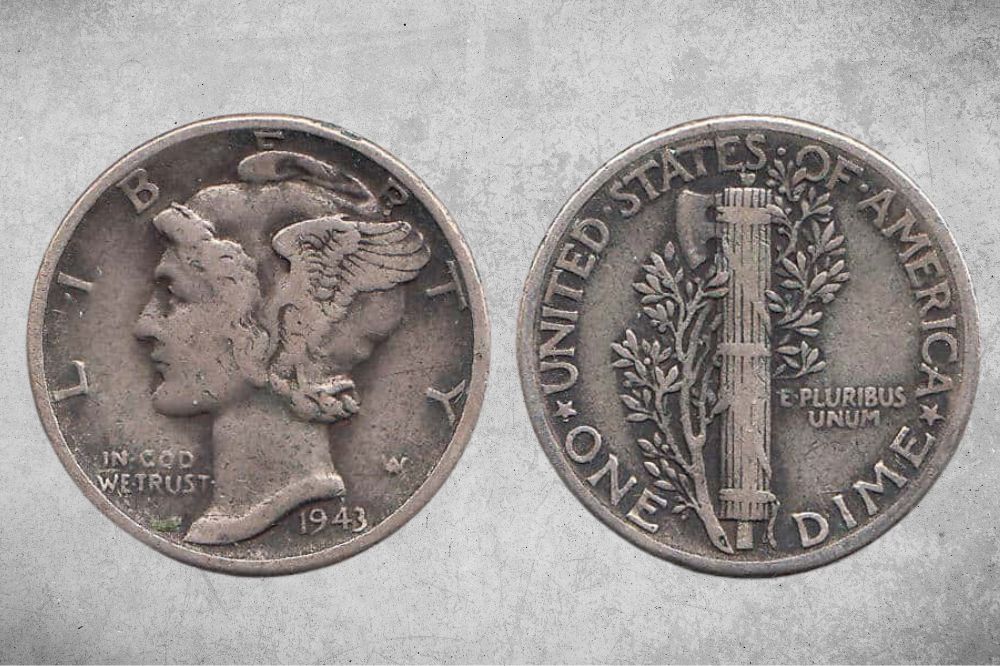1943 Mercury Dime is a great silvery coin that features a stunning design and has lots of history and interesting facts, which is why the most important question regarding it is whether one should look at it or read about it.
But why not do both? Read this article to learn everything about the 1943 Mercury Dime, and take a look or five at it whenever you feel tired from all these letters!
1943 Mercury Dime Details
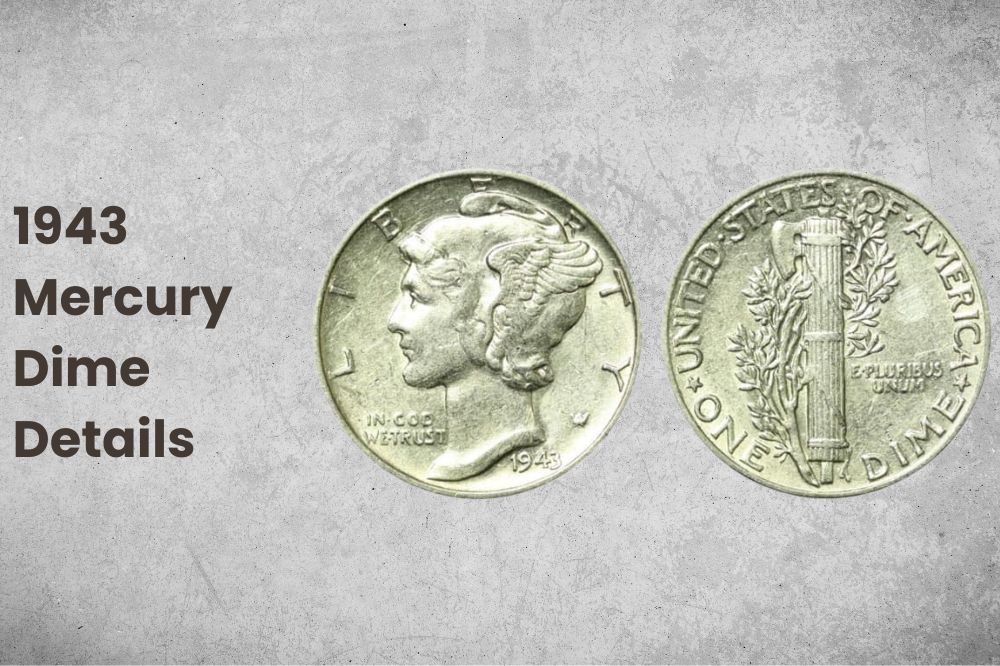
- Category: Mercury Dime (1916 – 1945)
- Mint(s): Philadelphia, Denver, San Francisco
- Mintage: 324,059,000
- Face Value: $0.10 (Ten cents)
- Obverse Designer: Adolph A Weinman
- Reverse Designer: Adolph A Weinman
- Composition: 90% Silver – 10% Copper
- Thickness: 0.053 inches (1.35 mm)
- Weight: 0.088 oz (2.5 g)
- Diameter: 0.705 inches (17.91 mm)
- ASW: 0.0723 oz (2.25 g)
- Edge: Reeded
- Melt Value: $1.57
Obverse
Most coins are never more than the means to acquire something we want or need. However, every now and then, a coin manages to attract the attention of even “ordinary” people with its appearance and design.
One such coin is the 1943 Mercury Dime, which has extremely interesting obverses and reverses.
On its obverse side, the 1943 Mercury Dime features a portrait of young Liberty, wearing a winged Phrygian cap.
The combination of the young woman and the winged Phrygian cap led people to think that the coin designer, Adolph Weinman, depicted the Roman goddess Mercury, which is how this dime got the nickname, Mercury.
However, the person after whom Weinman really designed the obverse side portrait is most likely Elsie Stevens, his neighbor, and wife of the famous American lawyer and poet Wallace Stevens.
Robert Woolley, the director of the US Mint from 1915 to 1916, noted in an earlier version of his unpublished autobiography that Weinman told him that the model was a wife of a lawyer who lived above him. The same thing was confirmed by the daughter of the Stevens couple, Holly.
On the obverse side, there is also the inscription LIBERTY, which extends along the rim of the coin, starting a little below the lower half on the left and ending a little below the level of the lower half on the right side.
In the lower part of the 1943 Mercury Dime, on the left side below the chin of young Liberty, is the motto of the USA, IN GOD WE TRUST.
The year of minting is on the right side at the very bottom of the coin and below the neck. The last detail this coin features on the obverse is the designer’s initials which can be found in its lower right section.
Reverse
The reverse side of the 1943 Mercury Dime is perhaps even more interesting because of the symbolism depicted on it.
What probably catches everyone’s eye is the long rectangular object in the center. That is a bundle of rods and an ax bound with a leather strap called a fasces. The word fascia comes from the Latin word fascis, which means bundle.
Unrelated Interesting Fact: The word fascism also comes from the word fascis.
This symbol was first used by Italians (Etruscans, to be precise), representing war, strength, law, and jurisdiction.
An olive branch, which is a well-known symbol of peace, is wrapped around it, thus creating a contrast between these two symbols.
The reverse side also features the legend UNITED STATES OF AMERICA ingrained along the rim of the upper side 1943 Mercury Dime, the inscription ONE DIME, which represents the denomination of the coin and which is located along the rim of the lower side and writing E PLURIBUS UNUM which can be seen faintly in the center of the coin to the right of the fasces.
Last but not least, the mint marks, D and S, were struck beneath the left olive branch in the bottom center part of the Mercury Dime.
Other Details
This coin is made of 90% silver and only 10% copper, thanks to which it shines – of course, if it is well preserved. It is very textured, and this especially applies to the reverse side, which has a lot of details – rods, ax, leather strap, olive branch and foliage, and inscriptions.
When it comes to the dimensions of this coin, it is a standard one with a weight of 0.088 oz (2.5 g), a thickness of 0.053 inches (1.35 mm), and a diameter of 0.705 inches (17.91 mm).
It also has a reeded edge with 118 reeds.
1943 Mercury Dime Value Chart |
|||
| Condition | 1943 Dime | 1943 D Dime | 1943 S Dime |
| Good | $2 | $2 | $2 |
| Very Good | $2 | $2 | $2 |
| Fine | $2.15 | $2.15 | $2.15 |
| Very Fine | $2.65 – $2.75 | $2.65 – $2.75 | $2.65 – $2.75 |
| Extra Fine | $3.25 | $3.25 | $3.25 |
| AU | $3.35 – $6.50 | $3.35 – $6.50 | $3.35 – $6.50 |
| MS 60 | $7 – $9 | $7 – $9 | $7 – $9 |
| MS 61 | $7 – $9 | $7 – $9 | $7 – $9 |
| MS 62 | $7 – $9 | $7 – $9 | $7 – $9 |
| MS 63 | $9 – $11 | $9 – $11 | $9 – $11 |
| MS 64 | $14 – $19 | $14 – $19 | $14 – $19 |
| MS 65 | $18 – $26 | $18 – $26 | $18 – $26 |
| MS 66 | $26 – $36 | $26 – $36 | $26 – $36 |
| MS 67 | $48 – $60 | $48 – $60 | $48 – $60 |
| MS 68 | / | / | $500 -$600 |
1943 Mercury Dime Value And Varieties Guide
The total number of 1943 Mercury Dimes, which were minted at three places, is 324,059,000.
1943 No Mint Mark Mercury Dime Value
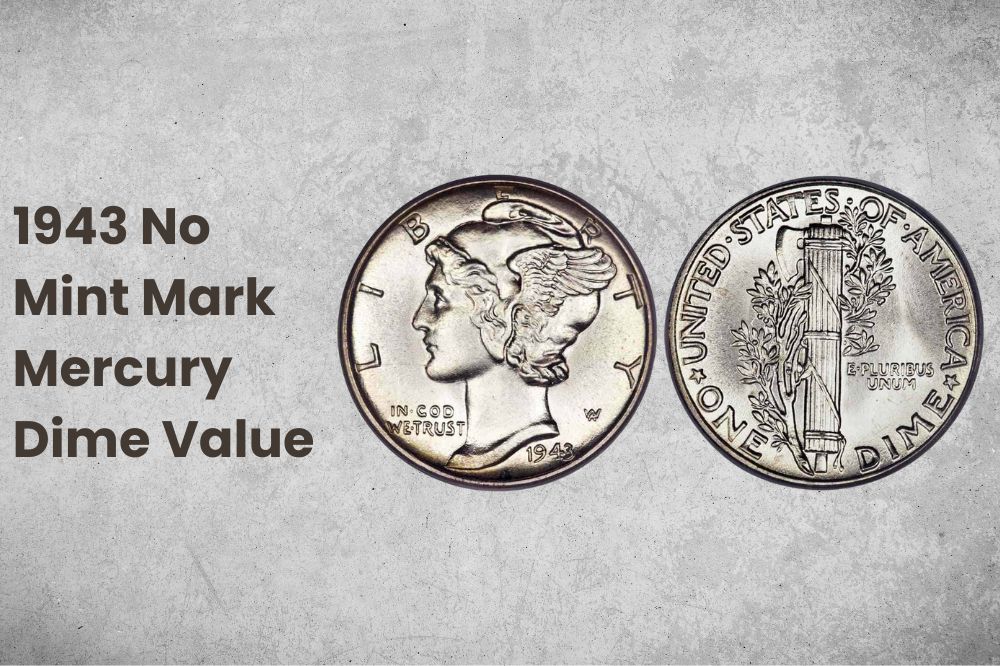
- Type: Mercury Dime
- Mint: Philadelphia
- Mint Mark: No Mint Mark
- Mintage: 191,710,000
- Face Value: $0.10 (Ten cents)
- Designer: Adolph A Weinman
- Composition: 90% Silver – 10% Copper
- Thickness: 0.053 inches (1.35 mm)
- Weight: 0.088 oz (2.5 g)
- Diameter: 0.705 inches (17.91 mm)
- ASW: 0.0723 oz (2.25 g)
- Edge: Reeded
The mintage of 1943 Mercury Dimes, struck in Philadelphia, totaled 191,710,000 pieces.
The high amount was not uncommon in the last four years of World War since, in that period, the lowest mintage was almost 160 million dimes, which happened in 1945. 1943 Mercury Dimes was actually the third lowest mintage in those years.
In most cases, high mintage means low(er) value, and that is the case with the 1943 No Mint Mercury Dime. You can expect to earn up to $7 for specimens in low grades. The ones in mint condition are obviously valued higher but not much higher since they go for prices between $7 and $36.
Even some of the specimens that are in top shape will not earn you a lot of money, being worth around 50 dollars.
The situation is different for the best of the best but especially for 1943 No Mint Mercury Dimes with Full Bands designation.
Remember the bundle of rods and axe, which we told you were bound with leather bands? Well, the bands go horizontally and diagonally around the bundle. Some of the dimes have full horizontal bands and even a tiny line that runs through the middle between the bands.
These are fully struck 1943 No Mint Mark Mercury dimes, and they are worth thousands of dollars when in top shape.
But you may be surprised to find out that the four most expensive of these specific coins, which were sold between $13,000 and $20,000, was not Full Bands but “regular” MS68 1943 No Mint Mark Mercury Dimes.
1943 D Mercury Dime Value
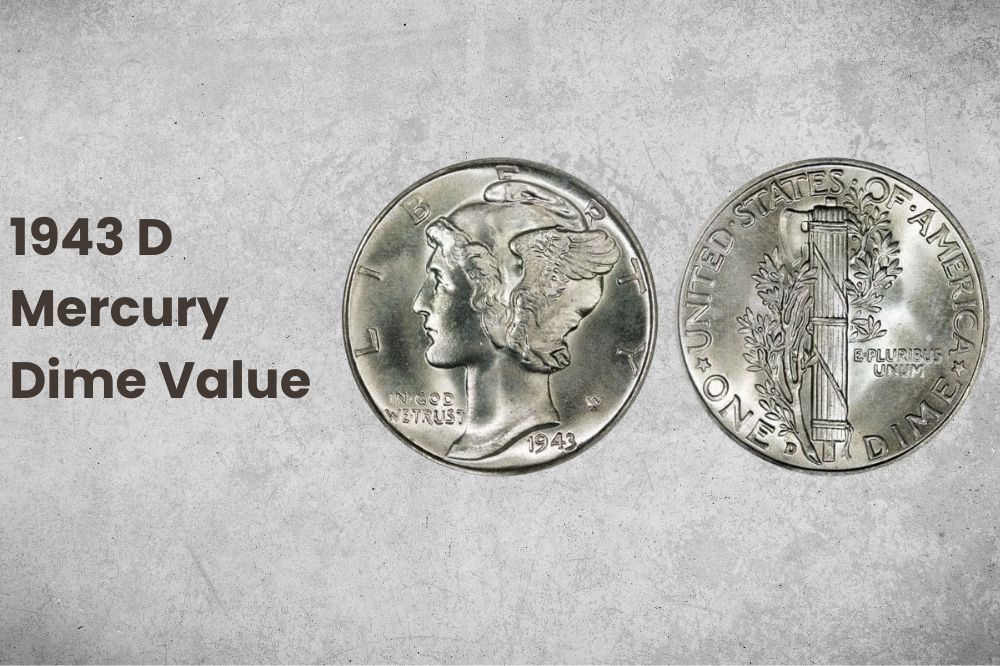
- Type: Mercury Dime
- Mint: Denver
- Mint Mark: D
- Mintage: 71,949,000
- Face Value: $0.10 (Ten cents)
- Designer: Adolph A Weinman
- Composition: 90% Silver – 10% Copper
- Thickness: 0.053 inches (1.35 mm)
- Weight: 0.088 oz (2.5 g)
- Diameter: 0.705 inches (17.91 mm)
- ASW: 0.0723 oz (2.25 g)
- Edge: Reeded
- Melt Value: $1.57
Similarly to the No Mint Mark specimens, 1943 D Mercury Dimes were minted in large numbers, which, coupled with the fact that they were in circulation for a long time, is the reason why they are not highly valued.
The mintage of 71,949,000 was the highest ever for a Mercury Dime struck at the mint in Denver.
You can expect to earn between $2.5 and $65 for most of the 1943 D Mercury Dimes. You will not be surprised to hear that Full Bands dimes cost more and will bring between $12 and $150.
Unlike the dimes from the previous category, however, they are rarely worth over a couple of thousands of dollars.
1943 S Mercury Dime Value
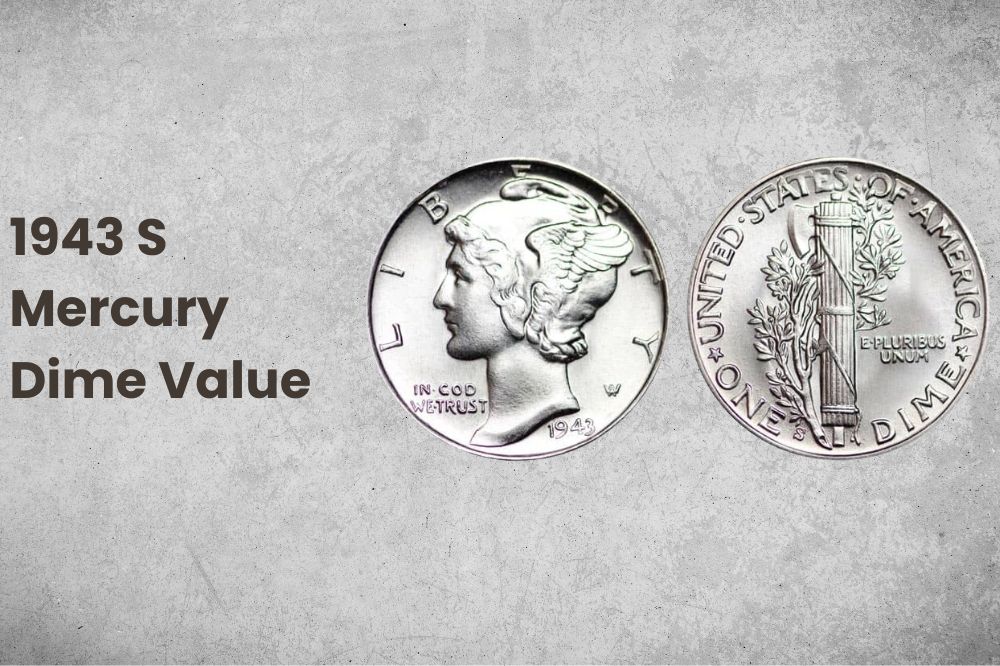
- Type: Mercury Dime
- Mint: San Francisco
- Mint Mark: S
- Mintage: 60,400,000
- Face Value: $0.10 (Ten cents)
- Designer: Adolph A Weinman
- Composition: 90% Silver – 10% Copper
- Thickness: 0.053 inches (1.35 mm)
- Weight: 0.088 oz (2.5 g)
- Diameter: 0.705 inches (17.91 mm)
- ASW: 0.0723 oz (2.25 g)
- Edge: Reeded
- Melt Value: $1.57
60,400,000 specimens of the 1943 Mercury Dime were struck in San Francisco. These coins are valued the same as the No Mint and D ones, which can be observed from the value chart in the previous section.
The creme de la creme of the 1943 Mercury Dimes, i.e., those in mint state 68 or with Full Bands designation and MS 68 grade, can earn you thousands of dollars, so watch out for them. The ones in the category beneath them, MS67, are valued in the hundreds.
Also Read: Top 15 Most Valuable Indian Head Penny Worth Money
1943 Mercury Dime History
Mercury Dime was struck for almost 40 years, from 1916 to 1945, when its design was changed to honor the recently passed away former US President Franklin Roosevelt.
In the 25 years before 1916, American people were using the Barber coinage, which consisted of a dime, quarter, and a half dollar.
Since 25 years is the minimum the Treasury has to wait before being able to replace the coin’s design without authorization of Congress, the officials at the US Mint used the first opportunity to do exactly that and announced that there would be competition for the design of the new coinage.
Charles Barber, the author of the previous designs, also entered the competition, but unfortunately for him, the Mint decided to go with Adolph Weinman.
We already praised the coin’s design, so we will not be doing it here as well.
However, there were some problems with the coin’s size since some vending machines were having trouble accepting it. This issue was promptly fixed, and the coin was approved to be released into circulation on 30 October 1916.
Another minor controversy happened after the release; some newspapers complained about the designer’s monogram, featured on the obverse, being too big.
Upon hearing this, Weinman wanted to redesign the coin but was not allowed to do so since the officials at the US Mint liked the original design.
An interesting fact about this coin is that it was a part of Project Mercury, which was the second manned flight and sub-orbital mission by the United States.
The Mercury Dimes were taken to space in July 1961. Later, however, they would end up in the Atlantic Ocean as a part of the capsule but would be retrieved along with it in 1999 from a depth of almost 16,000 feet (4,900 m).
Also Read: Top 15 Most Valuable Roosevelt Dimes Worth Money
1943 Mercury Dime Grading
Grading 1940 Mercury Dimes can be challenging if you do not have complete knowledge. Luckily for you, there is a video that you can watch to learn all about it!
List Of 1943 Mercury Dime Errors
1943 Mercury Dime was not produced with many errors, which was good news for the US Mint at the time but bad for us collectors now and until eternity.
But there were still some errors; we will present two of them here.
1. 1943 Mercury Dime Broad-struck Error
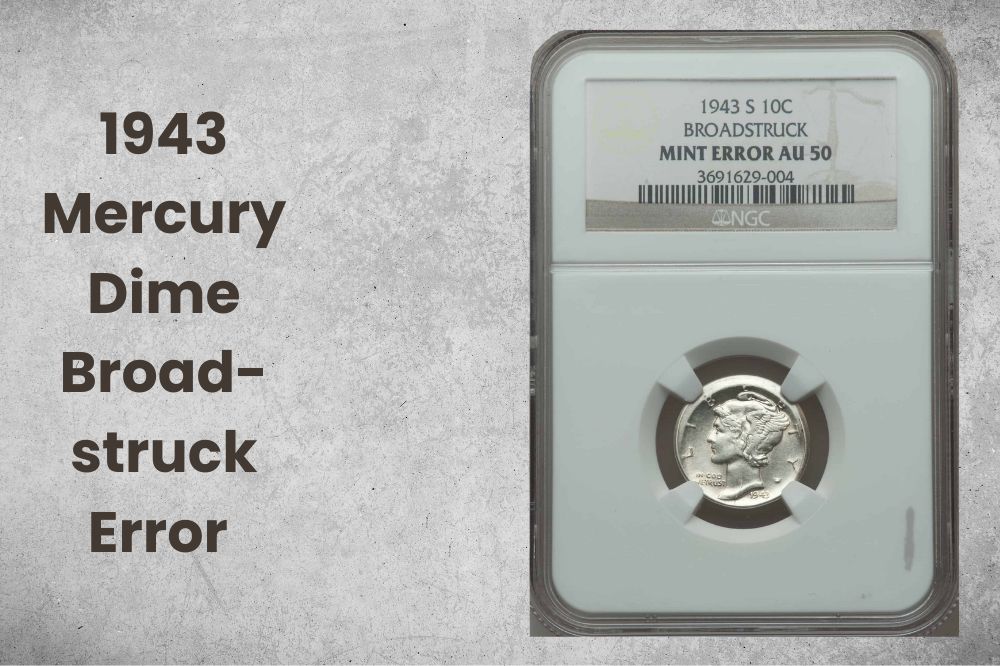
The broad-struck mint error happens when a coin is minted without the use of a collar, which is a retaining ring used to determine the final diameter of the coin being minted.
One 1943 S Mercury Dime with this error was sold for more than $120.
2. 1943 Mercury Dime Repunched Mint Mark Error
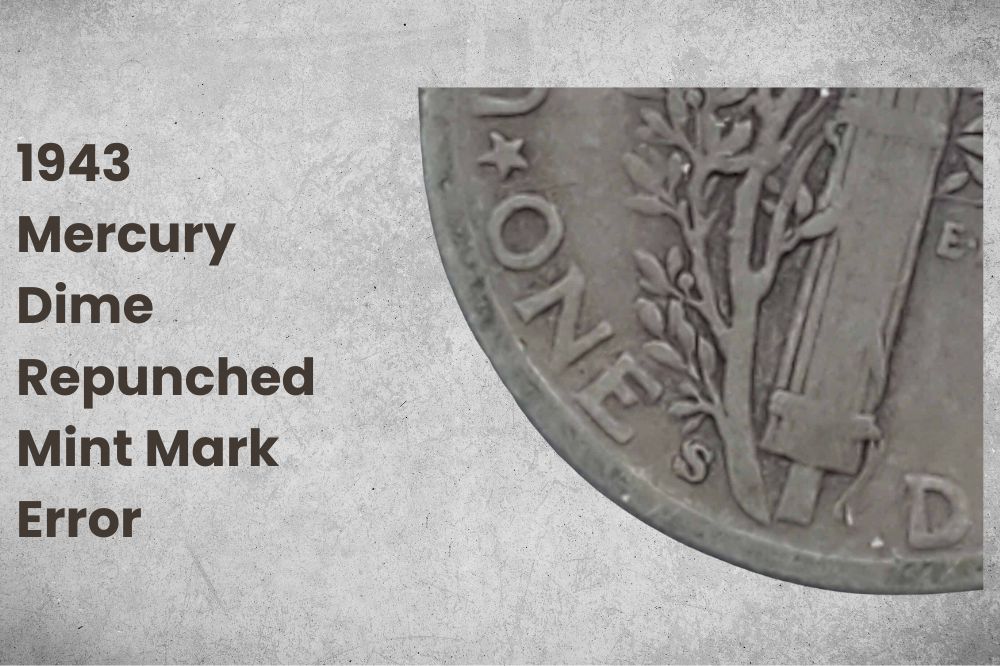
A variety of mintmark that has been repunched occurs when the letter punch used to punch the mintmark onto the working die makes two or more imprints.
For more info about the 1943 Mercury Dime errors, check the video below!
1943 Mercury Dime FAQ
What makes a 1943 Mercury Dime valuable?
There are a couple of features that make a 1943 Mercury Dime valuable. The first one is, of course, its mint state – the ones in pristine condition like MS67 and above are highly valuable. The second one is the existence of the Full Bands, which we already discussed in this article.
Is 1943 Mercury Dime rare?
1943 Mercury is not a rare coin. It is actually quite common, whose mintage was well over 300 million specimens.
Is a 1943 dime pure silver?
A 1943 dime is not pure silver. It is composed of 90% silver and 10% copper.
